Winter brings a lot of joy with it, but it also comes with a lot of problems that can be very frustrating. Salt stains on concrete are one of those problems. Road salt can effectively clear roads, but it can leave unsightly stains on your concrete driveway, sidewalk, and porch.
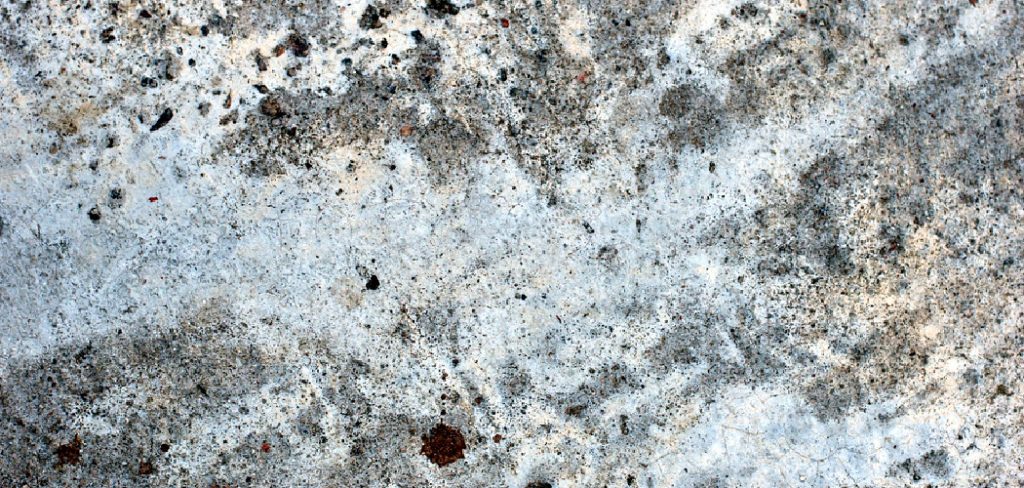
The longer you ignore these salt stains, the harder it will be to remove them. In this blog post, we will guide you on how to remove salt stains from concrete so that you can have a clean and inviting outdoor space this winter.
Can You Remove Salt Stains from Concrete?
Salt stains on concrete can be an unsightly and frustrating problem, especially during the winter months. It’s not uncommon for salt to be used to melt snow and ice on concrete surfaces, but the resulting stains can be tough to remove. The good news is that there are several methods you can try to remove salt stains from concrete.
From using a mixture of vinegar and water to using specialized concrete cleaners, there are options available that can help to restore the appearance of your concrete surfaces. If you’re dealing with stubborn salt stains, don’t give up hope just yet. With a little effort and the right approach, you can remove those pesky stains and enjoy a clean, attractive concrete surface once again.
Why Should You Remove Salt Stains from Concrete?
If you live in a region that experiences harsh winters, then you’re no stranger to salt stains on your concrete surfaces. While salt might be an effective tool for preventing slips and falls on icy surfaces, it can wreak havoc on your concrete surfaces. Not only does it leave unsightly white stains, but it can also damage the surface and compromise the integrity of your concrete over time.
That’s why it’s important to take action as soon as you notice salt stains on your concrete surfaces. Regularly removing these stains will help prolong the life of your concrete and keep it looking its best for years to come. Don’t let salt stains corrode away your beautiful concrete surfaces – take action now to keep them clean and well-maintained.
How to Remove Salt Stains from Concrete – in 7 Ways
1. Use Vinegar and Water
Mix equal parts of vinegar and water and pour it onto the affected area. Use a hard-bristled brush to scrub the surface. Once the stain starts to break up, rinse the area with clean water. If the stain is still resistant, you can increase the concentration of vinegar in the mixture, but be cautious not to use a concentration that could damage your concrete surface.
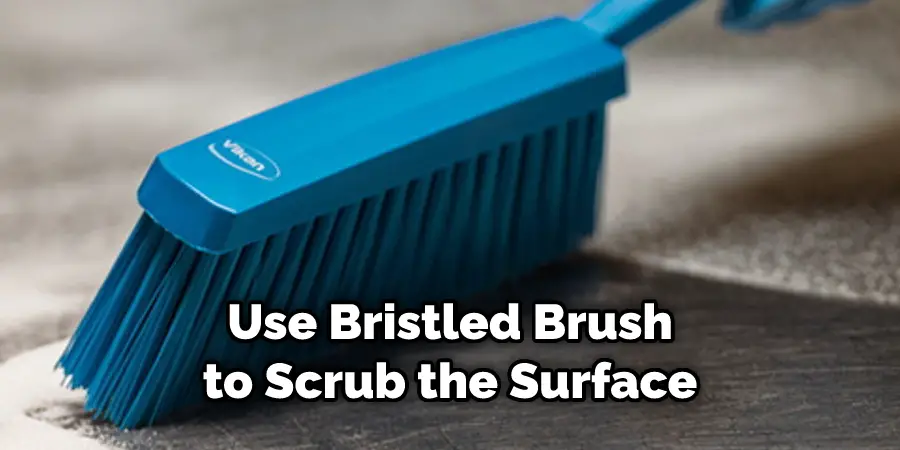
2. Use Baking Soda and Water
Baking soda is an excellent cleaner that can help remove salt stains. Mix a quarter cup of baking soda with a gallon of warm water and stir until the baking soda dissolves. Pour the mixture onto the salt stains and start scrubbing the surface. The salt stain should start to break down, and you can rinse it with clean water.
3. Use a Commercial Cleaner
Mild commercial cleaners like CLR, lime away, or a pressure washer can help remove stubborn salt stains from concrete. Follow the manufacturer’s instructions to avoid damaging your concrete surface. Be cautious when using a pressure washer, and avoid aiming the nozzle close to the surface, as it could chip off the concrete.
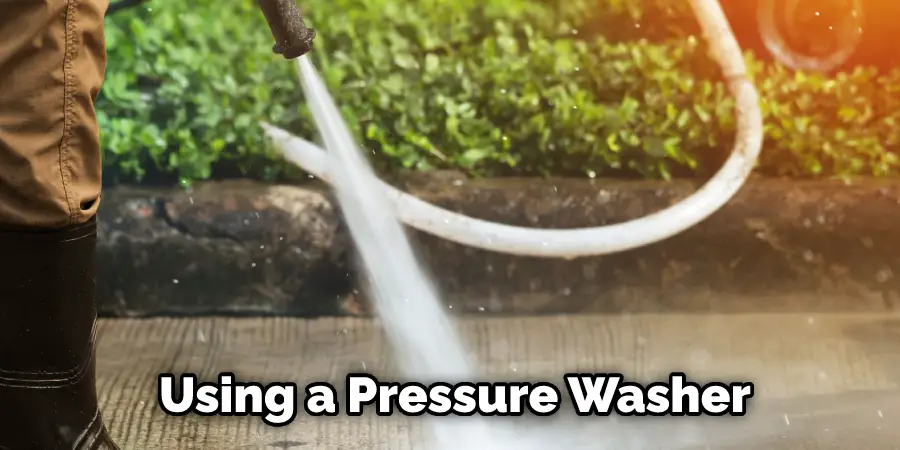
4. Prevent Future Salt Stains
Another way to get rid of salt stains on concrete is to prevent them from happening in the first place. Consider using a sealant to protect your concrete surface. A sealant creates a barrier that prevents salt and water from damaging the concrete surface. You can apply a waterproofing sealer or an epoxy coating that will offer long-term protection.
5. Simple Maintenance
Next, keeping your outdoor surface clean and well-maintained will reduce the effects of salt on your concrete surface. Sweep away snow or salt as soon as possible with a hard-bristled broom. Ensure that downspouts and gutters are directing water away from your concrete surface to avoid standing water.
6. Use Cat Litter
If you don’t have any of the items mentioned above, you can use cat litter to remove salt stains from your concrete. Sprinkle a layer of cat litter onto the affected area and allow it to sit for at least one hour before sweeping away the excess. The granules will absorb the moisture from the salt stains, making them easier to remove.
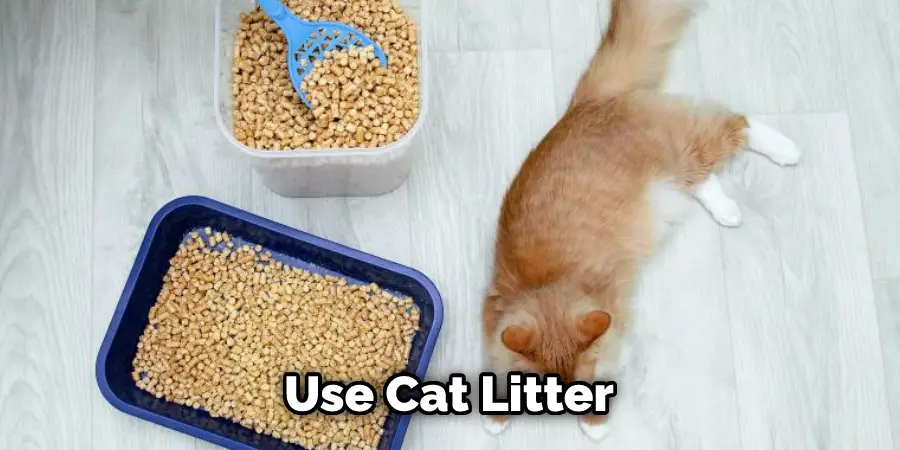
7. Call a Professional
If all else fails and you’re still dealing with persistent salt stains on your concrete, call a professional to help you out. A professional cleaning service can use appropriate tools and techniques to get rid of unwanted salt stains without damaging your surface. They will also be able to provide advice on how to take better care of your concrete in the future.
That’s it! You’ve now learned seven ways how to remove salt stains from concrete. Make sure you always take any necessary and use the right cleaning supplies for the job.
5 Considerations Things When You Need to Remove Salt Stains from Concrete
1. Time of Day
The best time to remove salt stains from concrete is in the morning before the sun has had a chance to heat up the pavement and make the stains harder to remove.
2. Temperature
If it’s too cold outside, the salt will be more likely to stick to the concrete and will be more difficult to remove. If it’s too hot, the salt may melt and become even more difficult to remove. The ideal temperature for removing salt stains is between 50 and 60 degrees Fahrenheit.
3. Humidity
If the air is too humid, the salt will again be more likely to stick to the concrete and will be more difficult to remove. If the air is too dry, the salt may not dissolve as easily and may also be more difficult to remove. The ideal humidity for removing salt stains is between 40 and 50 percent.
4. Type of Salt
The salt type used can also affect how difficult it is to remove the stains. For example, table salt is easier to remove than rock salt or calcium chloride.
5. Method of Removal
A few different methods can be used to remove salt stains from concrete, including power washing, scrubbing with a brush or broom, or using a chemical cleaner specifically designed for removing salt stains. Choosing the right method for the job is important since some methods may be too abrasive or not powerful enough to remove the stains.
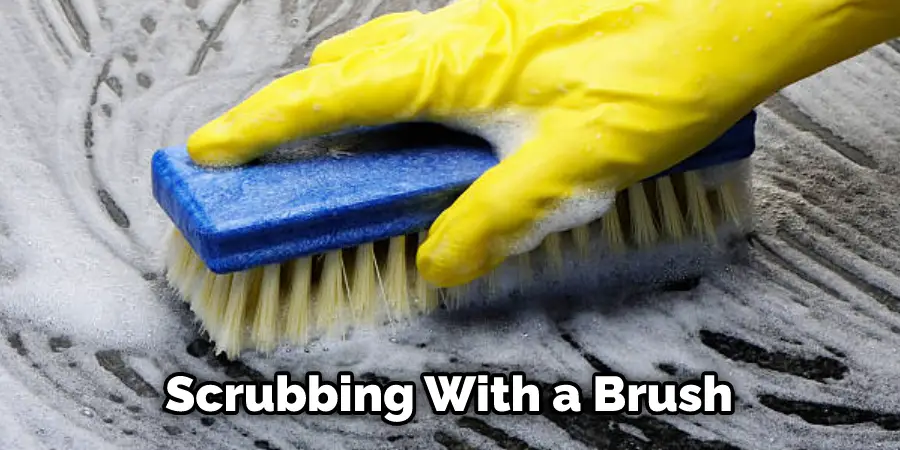
5 Benefits of Removing Salt Stains from Concrete
1. Easy to Do
Removing salt stains from concrete is an easy process that anyone can do. All you need is a little elbow grease and the right cleaners, and you’ll have your concrete looking like new in no time.
2. Saves Money
If you’re considering hiring a professional to clean your concrete, think again! Removing salt stains from concrete is a simple process that won’t cost you an arm and a leg. In fact, it may even save you money in the long run, as you won’t have to pay for costly repairs or replacements.
3. Prevents Further Damage
Salt stains can cause serious damage to your concrete if left untreated. By removing salt stains promptly, you can prevent this damage and keep your concrete looking its best.
4. Protects Your Investment
If you have a home or business with concrete floors, protecting your investment is important by keeping them clean and free of salt stains. Not only will this prolong the life of your floors, but it will also increase their resale value should you ever decide to sell.
5. Increases Curb Appeal
Whether you’re trying to sell your home or just want to make a good impression on your neighbors, removing salt stains from your concrete will definitely increase its curb appeal. There’s nothing like coming home to a clean and welcoming space – so why not start with your concrete?
Some Common Mistakes People Make When Trying to Remove Salt Stains from Concrete
Removing salt stains from concrete is a task that many homeowners face during the winter months. Although it may seem straightforward, people make common mistakes that can exacerbate the problem. One mistake is using hot water to melt the salt away, which can cause the concrete to expand and crack.
Another mistake is using abrasive materials like steel wool or wire brushes, which can scratch and damage the concrete. It’s also important to avoid using acidic cleaners, which can eat away at the concrete surface.
To effectively remove salt stains from concrete, it’s best to use a specialized cleaner designed for this purpose and to follow the instructions carefully. By avoiding these common mistakes, you can successfully remove salt stains from your concrete surfaces and avoid costly repairs.
Conclusion
Salt stains on concrete can be an eyesore that can be challenging to remove. The good news is that the process of removing them is relatively straightforward. You can use simple cleaning solutions like vinegar and baking soda or invest in mild commercial cleaners.
Preventing salt stains from happening in the first place can also go a long way in keeping your concrete surface looking its best. Remember to maintain your outdoor surface regularly by sweeping off snow and salt and keeping water away from your surface.
With this guide, you can successfully rid your outdoor space of salt stains and restore the beauty of your concrete surface. Thanks for reading our post about how to remove salt stains from concrete.
